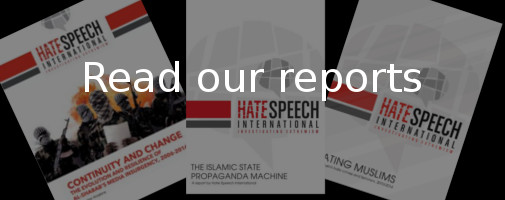Between 11 and 19 March 2012, the 23-year-old French-Algerian petty criminal Mohammed Merah committed three gun attacks in the French cities of Montauban and Toulouse.
Øyvind Strømmen
Focus on Belgium:
1. A Trial in Antwerp – 2. The Shots in Brussels (Further background: The Toulouse and Montauban Attacks) – 3. “We are like the canary in the mine”
The first two attacks targeted French soldiers of immigrant origins, killing Master Sergeant Imad Ibn-Ziaten, Corporal Abel Chennouf and Private Mohamed Legouad.
On the morning of 19 March in Toulouse, Merah attacked Ozar Hatorah, a middle and secondary school for the 11- to 17-year-olds age that also serves as a transportation hub for other schools in the area. Merah rode up to the school on a Yamaha motorcycle, dismounted and immediately opened fire. A 30-year-old rabbi and teacher, Yonatan Sandler and his two sons Aryeh and Gabriel, ages 6 and 3, were the first victims. Other teachers and pupils at first thought that the noise was fireworks, but then Merah continued shooting as he entered the schoolyard. He chased an eight-year-old girl, Miriam Monsonego, grabbed her by the hair and raised his gun to shoot her. The gun jammed. He switched weapons and shot her in the temple at point-blank range in a horrible scene that was caught by the school’s security cameras. Merah then got back on his motorcycle and fled.
The attacks shocked France and speculation at first focused on right-wing extremists, which would have fit both the attacks on soldiers of immigrant background and on a Jewish school.
At 1 a.m. on the 21st of March, however, an editor at the French TV channel France 24 received a call from a man who calmly said in perfect French that he was the killer, gave details of the murders to prove it and claimed to be linked to al-Qaeda. At the same time, police were closing in and on the early morning of 22 March, the elite police force RAID surrounded the five-storey block of flats were Merah lived. Police evacuated his neighbours, cut off power and gas, and besieged his apartment, hoping to wear down Merah and avoid a violent confrontation.
In the morning, police attempted to arrest Merah, who fired at them. He was subsequently shot and killed by a police sniper.
Connections to other extremists
While Merah has often been described as a lone wolf, the investigation proved that he had broad contacts with other extremists. His stepbrother, Sabri Essid, had been convicted in connection with a terrorism case in 2009.
According to information acquired by the French newspaper Le Monde, Merah had extensive international connections, often calling or sending text messages to people in Egypt, where he had family, Morocco, the United Kingdom, Spain, the Ivory Coast, Kenya, Croatia, Romania, Bolivia, Thailand , Russia, Kazakhstan, Laos, Taiwan, Turkey, Saudi Arabia, the United Arab Emirates, Israel and – strikingly – the small, mountainous country of Bhutan. While Le Monde did not say whom he contacted in these countries, it seems likely that his international connection may have included extremists.
In addition, Merah travelled to Afghanistan and Pakistan and is believed to have been in touch with senior extremists there. His name had also been noted by French intelligence services prior to the attacks and he had been under sporadic surveillance.
Merah is also believed to have been involved with Forzane Alissa (Knights of Pride), a group with linksto and many similarities with Anjem Choudary’s banned radical group Islam4UK. Forzane Alissa wants to impose Islamic law in France and make the nation an Islamic caliphate. It has also staged street protests and was banned in early 2012. Several members of the group were arrested but not charged after Merah’s attacks. Merah’s older brother Abdelkader was also arrested and charged with complicity. He denies the charges, but remains in police custody.
Their sister Souad has disappeared from France and is believed to be in Syria.
The role of the Internet
Merah was an active on the Internet, with profiles on several social media sites. The Internet has also played an important role after Merah’s death, being used by other extremist Islamists to hail Merah and urge others to follow his example.
Several online forums connected with jihadist ideology praised Merah for his attacks. A video tribute – “The Lone Lion” – also spread online. The video included images taken from French news media, as well as recordings of the al-Qaeda leaders Osama bin Laden and Ayman-al-Zawahiri. A Facebook page, called “Homage to Mohamed Merah”, was also set up but later removed by Facebook at the request of French authorities.


 Print Friendly
Print Friendly






[…] school, Ozar Hatorah, where four people were killed, three of them young children (Read more: The Toulouse and Mountaban attacks). The other was a bomb attack against a Jewish centre in Buenos Aires on 18 July 1994 in which 85 […]
[…] on Belgium: 1. A Trial in Antwerp – 2. The Shots in Brussels (Further background: The Toulouse and Montauban Attacks) – 3. “We are like the canary in the […]
[…] 0 Focus on Belgium: 1. A Trial in Antwerp – 2. The Shots in Brussels (Further background: The Toulouse and Montauban Attacks) – 3. “We are like the canary in the […]